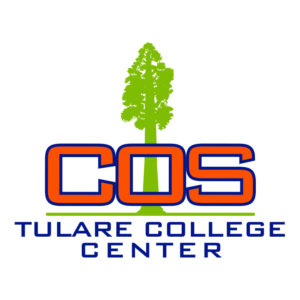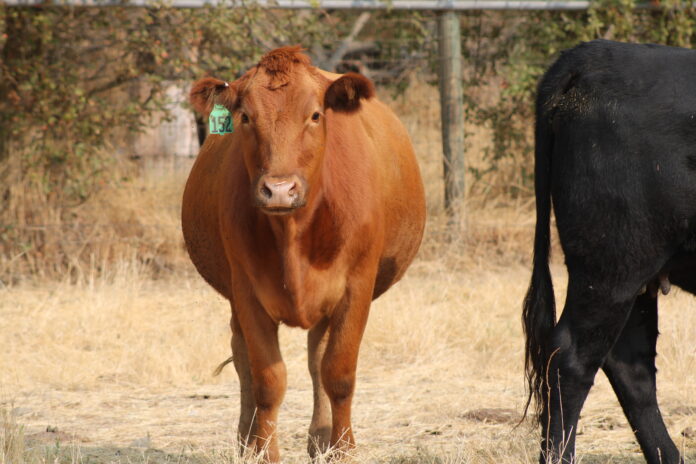 The Tulare Irrigation District held its board of directors meeting on Tuesday, January 11, 2022 at its secrete hideout somewhere west of the City of Tulare. It’s not really a secrete but on a the foggiest of days it can be difficult to make your way home after a meeting if you’re not paying attention. I know one guy, OK it was me, who headed south instead of north and came upon an unfamiliar water barrier a river or canal, it was too foggy to tell for sure. Fortunately my old rig had a compass and thermometer on the inside rearview mirror and I found my way back to State Route 99. Also, that’s what started the rumor that NASA routinely calls me to calibrate their equipment with the readings on my rearview mirror.
The Tulare Irrigation District held its board of directors meeting on Tuesday, January 11, 2022 at its secrete hideout somewhere west of the City of Tulare. It’s not really a secrete but on a the foggiest of days it can be difficult to make your way home after a meeting if you’re not paying attention. I know one guy, OK it was me, who headed south instead of north and came upon an unfamiliar water barrier a river or canal, it was too foggy to tell for sure. Fortunately my old rig had a compass and thermometer on the inside rearview mirror and I found my way back to State Route 99. Also, that’s what started the rumor that NASA routinely calls me to calibrate their equipment with the readings on my rearview mirror.
The Meeting
Chairman Dave Bixler called the meeting to order at 9:00am. There were no changes to the agenda and under public comment Director Mike Thomas asked General Manager Aaron Fukuda for a little extra info during the SGMA portion of the meeting. The minutes were approved without corrections or additions.
were approved without corrections or additions.
Water Report
TID Water Master Marco Crenshaw gave the report saying there is a water run going on with 480 cfs coming into the district from the Kaweah River. This could last up to 10-days. There is data from other districts he’s waiting on to finalize that date. There is good inflow to Lake Kaweah and Crenshaw said without diversions the Army Corps of Engineers might get a little nervous about flood control releases. He said recharge facilities are ready to go if needed.
On the Central Valley Project side Lake Millerton has been getting good inflow as well and there is a 40 percent Class I allocation for now. Releases to the Friant Kern Canal are making their way south. Inflow from the San Joaquin River is good.
Snow levels in the Kaweah River watershed is 148 percent of average for this date and 68 percent of the April 1st average. Crenshaw follows the conditions out in the Pacific and said there are indications of more storms coming our way. He follows something called “The Blob”, not sure what that is but I think it’s a blob of warm water. Director Rick Borges said there are indications of another atmospheric river at the end of this month. I asked if anyone has been following the hog spleen method of weather prediction but they pretty much said they have more trust in Crenshaw doing a rain dance. Anyway, it is possible for a repeat of last December’s storm systems. That’s good news because many times when the first part of the year is wet the second part is dry. A repeat of last month would go a long ways to fill up some reservoirs and help us make it through our hot, dry summers.
Director Dave Martin ask what is happening with the water coming into the district and Crenshaw said much of it has gone to recharge while priming the system but there is water for sale and maybe 30 percent is purchased by growers.
Fukuda reported on statewide matters. Much of the last storm tracked south of Lake Shasta so inflow is low. That impacts CVP supplies statewide as much of the San Luis Reservoir supplies come from there. He also said the Biden administration’s attack on the recent biological opinions is going to court and is the usual mess with NGOs and everyone else getting worked up. He expects a ruling next month. During the December storms the Delta pumps were hobbled and lost at least 70,000 a/f of supplies. It is hoped the court will rule in favor of sane Delta operations.
Fukuda continued saying TID set a rate of $52 per a/f at the 2020 season. He recommended keeping this rate for now and adjusting as needed later in the season. That sounded pretty good to me and I think the board was OK with it as well. There’ll be more about this in the budget discussion later.
Fukuda shared the Kaweah Delta Water Conservation District groundwater report saying KDWCD’s engineer Larry Dotson and his team do a great job. There is a downward trend and it’s fueling the groundwater pumping cap discussions in the Kaweah Subbasin. Fukuda also reminded folks about the depth to groundwater and elevation from mean sea level are different ways to measure the same subject. There is an anomaly at the far west end of the area studied where a water mound appears to be forming. Martin said this is a great report to give at the Kaweah St. Johns River Association meeting. Borges said this report would also be good to share at the next Mid Kaweah Groundwater Sustainability Agency meeting.
Fukuda said Dotson works very hard to develop a report that encompasses all the data and presents it an understandable form. Fergus Morrissey, GM Orange Cove ID was on the call and he said the current model runs do not show another atmospheric river but those models really don’t hold water further than seven days out. But if another series of storms comes through there could be a 215 Uncontrolled Season release on the FKC.
Fukuda said he was doing some remodeling and had left two screen doors in the backyard. He said when the fog came in there was a good amount of water dripping off of them. So, he’s looking into existing technology that recaptures fog water. Borges said the gauges at his place measures either a 10th or 100th of an inch during the foggy hours. I didn’t catch which amount.
Superintendent Report
TID Superintendent Wayne Fox reported some of the maintenance underway was happily delayed due to rain and since then things have dried out enough to get back at it. He said releases flushed a great deal of homeless debris from culverts and the clean up was intense. The homeless problem in California is no longer regulated to skid row and inner city squaller. Drive up and down Highway 99 and you’ll see third world camping conditions. Fukuda said the homeless issue has resulted in having to call the police. He said there is good cooperation between the district and law enforcement. Of course the district doesn’t turn water on folks placing them in danger but sometimes the homeless don’t want to leave. For as long as water flows and as long the ditch bottoms stay muddy the populations will move elsewhere. Which is not a solution to their plight.
Finances
TID Controller Kathi Artis gave her report and the books are in balance. Dry years are tough on a district because there isn’t much water to sell. But dry years are not new to California. Way before folks started running in circles panicked from fear of change with the United Nations listening to 15-year old’s for advice, we’d have dry years, wet years and in between years. People who depend on reality and results to do their jobs make allowances for changes in the weather. Districts have savings accounts to help during the lean times. They are also very frugal. Don’t believe me? Go try to sell them something.
Fukuda said there will need to be adjustments to fund levels. While the district keep reserve funds but unlike the state or feds they don’t want them to get so big the constituents’ unneeded money is being held in an account somewhere. Director Thomas asked if there is an alternative to the Local Agency Investment Fund since LAIF has historically yielded poor returns. I believe this was more of a rhetorical question. Anyway the board approved Artis’ report and it voted to pay its bills.
Under the review of expenses it was pointed out Fox has earned a chemical certificate that takes a good deal of serious study. Good for him. Also, Fox explained a passing car threw a rock into the windshield of a rental truck the district was using. Also, also the district is changing its lamps and lights throughout the headquarters, shop and yard. Fox said it’s difficult to get an electrician because so many of them are dealing with dairies.
Fukuda said he’s about ready to chuck AT&T and will terminate the district’s business as soon as the last bill is paid. He said getting reliable internet service for the headquarters from AT&T doesn’t appear to be possible in this universe.
TID Assessor/Collector Beth Holmes gave her report on the installments for TID landowners. This is a public report and the district has records if you’d like more information. Now think about this. The total delinquent tax bill owed TID since 2016 is less than $30,000. More than 90 percent of this year’s first installment has been received.
Engineering
TID Engineer Jeremy Barroll said there are couple of new development projects coming into the district. He reported the infrastructure lines have been run under TID pipes so the district will have access to replace that pipeline eventually. One of Barroll’s responsibilities as engineer is to protect the district’s assets. He also reported he has been coordinating with others to place infrastructure such as utilities in desirable locations. Fukuda said there was some work at Cameron Creek and 99 that has been completed so the system won’t be impeded.
SGMA
Fukuda is also the manager of the Mid Kaweah GSA. He reported most of the activity has centered on how to spend about $10 million from grants. After subbasin-wide plans are finalized the remainder of the funds will be split between the three GSAs. There will need to be a group formed to help prioritize the projects. Once that is completed by the end of January deadline the selection will go to Provost & Pritchard to write and send to the state by the February 18th deadline for submissions. The projects must have a flood and recharge nexus.
There is also a $50 million Department of Conservation grant pool for repurposing ag land. He’s reached out to the Sequoia Riverland Trust NGO to partner with the GSA to be a conservation space manager. An MOU is being drafted for the GSA board consideration. Director Martin is also on the MKGSA board.
Kaweah Subbasin wide Fukuda expects a dashboard will be developed for everyone to use by the end of this month. Good for them it is so difficult to drive around and not know your speed or how much gas is in the tank. DWR sent a letter saying the Groundwater Sustainability Plan review should be here maybe this week or next. Not sure on this. Fukuda said there has been a big misunderstanding between the GSAs and DWR regarding this reviews under SGMA. Everyone thought a GSA had 180-days to prepare a response to address problems found the DWR GSP review. No, not so. GSAs have 180-days to come up with acceptable solutions to DWR criticism. Ouch, a lot work in a short time could be in many futures.
Working with attorney Valerie Kincade Fukuda said the MKGSA emergency ordinance update is being drafted. He said it’s only five to six pages and it’s possible to revise it in the future as more real-world experience is gathered. Also MKGSA will increase its compensation to TID for Fukuda’s time by three percent over the current fee. None of the TID directors have been receiving much input or feedback on SGMA matters from growers. Borges said the only thing he has heard are requests for individual water banking accounts. Fukuda said he’s been working with Four Creeks Engineering’s Dave DeGroot on how to color the different categories of water for accounting purposes. He said he’s heard a strong response from the area along the FKC experiencing the most subsidence, mostly the Eastern Tule GSA, on the possibility of double accounting of recharge. He said most of the growers are turning to their transitional water first. That’s the most stable supply. A grower can put water in the ground by a metered method and when it is taken out withdrawals will be measured by evapotranspiration. Land IQ is the ET referee there.
Eastern Tule GSA, on the possibility of double accounting of recharge. He said most of the growers are turning to their transitional water first. That’s the most stable supply. A grower can put water in the ground by a metered method and when it is taken out withdrawals will be measured by evapotranspiration. Land IQ is the ET referee there.
Friant
Fukuda reported there is much good news on the FKC repairs. The plans call for shutting down the FKC from November of this year to January of next. The Friant Water Authority received it’s share of the state’s $37.24 million and the Pixley GSA paid its $11 million bill on time.
Chris Hunter has left FWA to work for Lindmore ID and will be working to support East Kaweah GSA. Fukuda noted almost everyone who words at Lindmore ID used to work at Friant. Borges represents TID on the Friant board and said the canal repair groundbreaking will be on January 25th but no one knows at what location at this time. I suspect they’ll work that one out.
Kaweah GSA. Fukuda noted almost everyone who words at Lindmore ID used to work at Friant. Borges represents TID on the Friant board and said the canal repair groundbreaking will be on January 25th but no one knows at what location at this time. I suspect they’ll work that one out.
Other Reports
Barroll and Fukuda have been working night and day to get an application together for a $20 million grant for the McKay Point project. So far the state requirements to be technically and fiscally acceptable have been met. The pool of applicants has narrowed to an even dozen. Cal OES and the feds will pick who gets how much. He said the state is pushing this project hard because it is a drought and flood project. California has yet to have a drought project funded in this program. Also, Fukuda said the official name of the project is now The Reservoirs at McKay Point. He said it sounds like a shopping mall.
Governor Gav Newsom dropped his budget yesterday. There is $5.2 billion over three years for water. Finally there are funds small farmers can qualify for. Fukuda said instead of spending it all at once it will be doled out. There is a $30 billion surplus from over taxing the people more than the amount the state needs and instead of giving it back they’re spending it. But that’s how it works so we scramble to get funds back in the form of competitive grants.
GM Report
Fukuda said districts can now get NRCS grant money for recharge. There is a new city manager at Tulare and he was able to give the city staff a history of TID/City cooperation and that set up some further dialog on how they can work together in the future. One of the big topics is what happens when TID goes out for another Prop 218 election to raise assessments. The city is very concerned about being able to meet any new financial developments that could cost it more.
Budget
Next Fukuda spoke about the district’s budget. The cost of being a Friant contractor has gone up 191 percent since the CVPIA passed. This isn’t because of increased staff and consultant costs. It’s mostly due to regulatory changes imposed by the government. Friant bills quarterly. A big portion of the costs is Friant’s obligation to the San Luis Delta Mendota Water Authority for the CVP. And of course as a Friant member TID gets to share in that.
Fukuda said power expenses are somewhat beyond the district’s control as they have to squeeze the juice when it’s needed whether or not it falls in peak billing times. There have also been increases in chemicals and consultant costs.
There are capital outlays such as new trucks to replace old equipment. For example, Fox’s truck needed replacement two years ago. The shop needs to be maintained and that costs money. The district also needs a new server or switch to a server on the cloud. The Reservoirs at McKay Point will cost almost half a million dollars which will be reimbursed from grant income but not right away.
The budget calls for $8.6 million income and $5 million cash at the end of the year. So that means they are going to have to spend at least $3.6 more than they bring in. Again, these are public records if you need more information. The board approved the preliminary budget and it should be known this is a worst case scenario. Borges noted even though SLDM will be charging for its power transmission improvements it will save in the long run. Fukuda thanked staff for working so hard on this and he expects improvements in formatting budget reports this year will allow clearer and more uniform reporting on a monthly basis culminating with a year end and recommended budget comparison. At least that’s the goal.
budget and it should be known this is a worst case scenario. Borges noted even though SLDM will be charging for its power transmission improvements it will save in the long run. Fukuda thanked staff for working so hard on this and he expects improvements in formatting budget reports this year will allow clearer and more uniform reporting on a monthly basis culminating with a year end and recommended budget comparison. At least that’s the goal.
It’s the time of year to review and set officers and committee positions. Fukuda said the current retirement plan is lumping everyone together and he’s shopping for plan manager who will keep TID affairs in focus. That will be discussed when which ever committee is in charge of that kind of things meets.
I don’t have a copy of all the different committees and boards staff and directors take part in. It is a long list of agencies, ditch companies and committees and is very interesting. The board approved keeping the same slates and proxies. Without discussion the board also approved by resolution to continue meeting online. The reason for this meeting being only remote today is Fukuda was sick this weekend. He was tested and he doesn’t have the Sino Cooties and Director Martin diagnosed him with malaria.
Other News
The Collaborative Action Plan will be seeking support from the Valley including TID. Fukuda they need the support. Several different interest groups, caucuses representing drinking water, water agencies, local government and others have joined together to form CAP. A common problem statement has been achieved. This statement shows agreement on some major issues from the need of reliable safe, drinking water supplies to an agreement of the need to audit state programs to remove redundant regulatory impediments. Yes, NGOs agree the gov can get in the way.
Workgroups met over months and came up with 90-actions as solutions for water problems in the San Joaquin Valley. Addressing drinking water needs to be done immediately if not sooner, reducing the demand and supply gap, establish one of the largest ecosystem improvements in history and many other goals have been set. All of this is being designed to be completed in 10-15 years or less.
Fukuda said the CAP has agreed land retirement is not the only solution and would be unacceptable to the overall health of the Valley. Equal effort must be made to increase supply, including better management of the Delta. There is more water available in the Delta that can be exported safely without harm if very stringent protocol is followed. The environmental and drinking water caucuses are willing to work towards this and other solutions. That is a major development. He said it has reminded him people with very different goals and viewpoints can work together. He said he told the CAP if they want to sit around and talk he’s out of there. He said action must be made as soon as truly feasible because a wet year in the Delta can make huge positive impacts and we can’t plan for that after it happens only before. SGMA implementation needs to have the crippling impacts addressed before the unintended consequences downs a big swath of the Valley’s civil society.
different goals and viewpoints can work together. He said he told the CAP if they want to sit around and talk he’s out of there. He said action must be made as soon as truly feasible because a wet year in the Delta can make huge positive impacts and we can’t plan for that after it happens only before. SGMA implementation needs to have the crippling impacts addressed before the unintended consequences downs a big swath of the Valley’s civil society.
Fukuda asked the board to pass a resolution of support for the CAP and it was passed unanimously.
Board Reports
Borges began saying he’s attended meetings where he heard there was 20 inches of water content in the snow at Panther Meadows. That’s pretty good. There will be Airborne Snow Observatory flights in March and April. He said the Kaweah Water Quality Association is growing and the budget is improving with the new membership. Membership rules have changed and if you don’t meet the end of January deadline you’ll be dropped and no longer under the protective umbrella.
Martin reported engineer Dennis Keller said the waters that feed the Kings and San Joaquin Rivers are experiencing changes. The runoff used to be very comparable. Due to fires there is now a 50 percent difference. The denuding of plants have allowed the winds to blow the snow around causing different runoff patterns. I’ve heard the unnatural, super dense canopy of mismanaged forest caused watershed problems beyond the wildfires. Water that would have percolated into the ground was evaporating from treetops.
Thomas reported the Watchumna Ditch Company did have a meeting but was about all I heard. With that the meeting went to closed session for a few lawsuits, some labor negotiations and maybe an insurance claim. That was that as of 11:47am. Not nearly as long this month as it has been. Usually I have to bail before they’re finished so I can attend another meeting but the other meeting cancelled today so you know – one only notices a meeting running long when one’s butt is tired or there is somewhere else one needs to be. Go be good to yourselves and each other.
DISCLAIMER OF RESPONSIBILITY; Waterwrights strives to provide clients with the most complete, up-to-date, and accurate information available. Nevertheless, Waterwrights does not serve as a guarantor of the accuracy or completeness of the information provided, and specifically disclaims any and all responsibility for information that is not accurate, up-to-date, or complete. Waterwrights’ clients therefore rely on the accuracy, completeness and timeliness of information from Waterwrights entirely at their own risk. The opinions expressed in this report are those of the author and do not represent any advertisers or third parties.
ALL RIGHTS RESERVED. Copyright 2022 by WaterWrights.net/DAW
TULARE IRRIGATION DISTRICT
6826 Ave 240, Tulare, CA 93274 Office: 559/686-3425
Board: David G. Bixler- President, Richard S. Borges, Jr.-Vice President, Scott Rogers, Dave Martin & Michael Thomas
Staff: Aaron Fukuda-General Manager, Jeremy Barroll-Engineer, Kathi Artis–District Controller, Wayne Fox–Superintendent, Marco Crenshaw–District Watermaster & Alex Peltzer-Attorney.
About: The Tulare Irrigation District was organized September 21, 1889. The original proposal for the formation of an irrigation district covering 219,000 acres, extending from the Sierra Nevada foothills to Tulare Lake, was eventually reduced to 32,500 acres. The District continued in this status until January of 1948 when the so-called Kaweah Lands” (approximately 11,000 acres) were annexed. In October of 1948, approximately 31,000 acres, compromising the area served by the Packwood Canal Company were annexed to the District. A U.S. Bureau of Reclamation contract was signed in 1950 providing an annual supply of 30,000 acre-feet of Class 1 water, and up to 141,000 acre-feet of Class 2 water from the Friant-Kern Canal. The District and the Kaweah Delta Water Conservation District have coordinated efforts to enhance the recharge of groundwater within the Kaweah Basin. During high flow times KDWCD may use the recharge basins with the District for recharge purposes. Further, KDWCD has historically provided for a financial incentive program through which the District sustains the level of groundwater recharge from supply sources into the District. This historical program was recently reinstated by both districts in lieu of the District’s plans to concrete-line this canal to conserve the surface water. TID is a member of the Mid Kaweah GSA DWR#-5-022.11
































